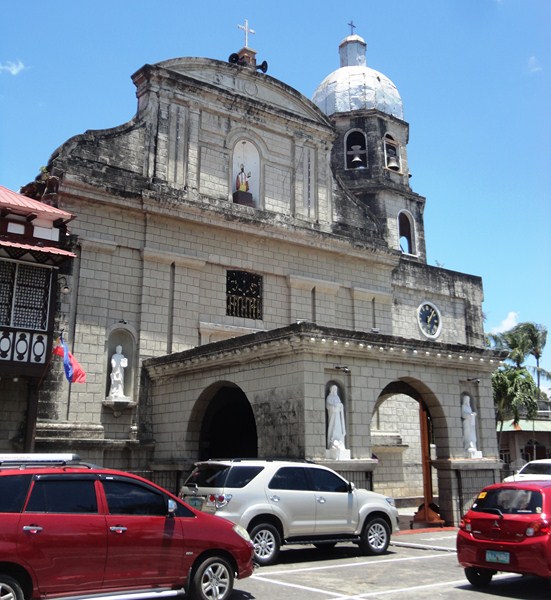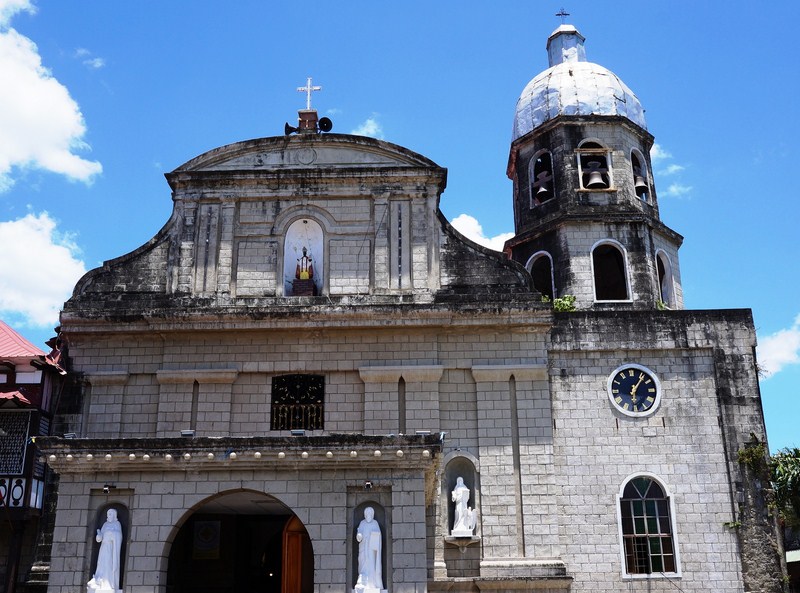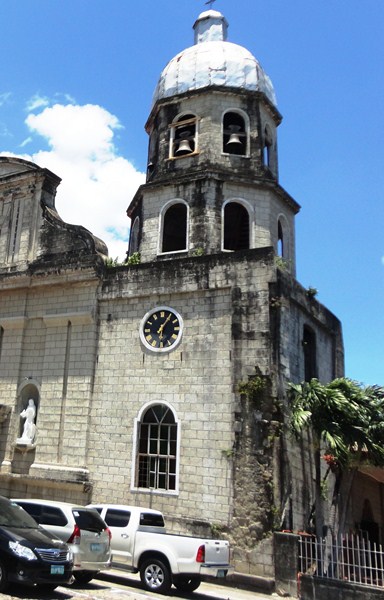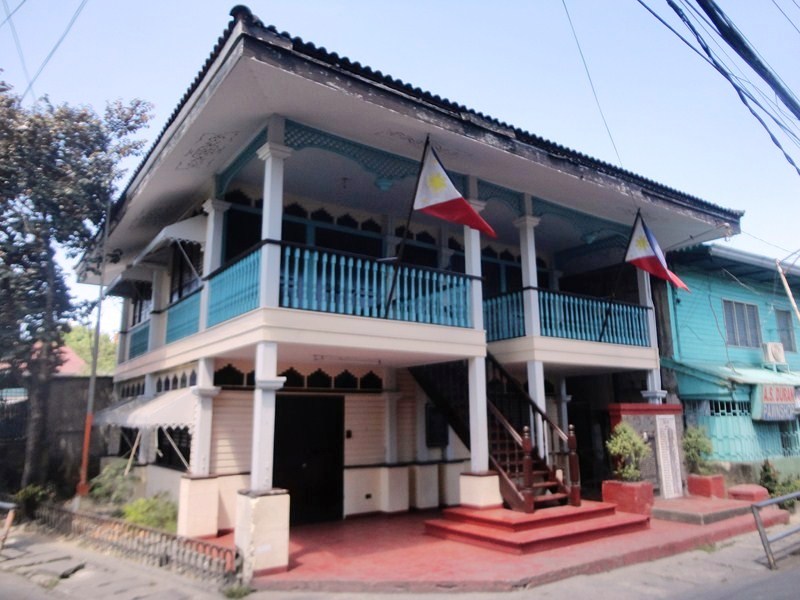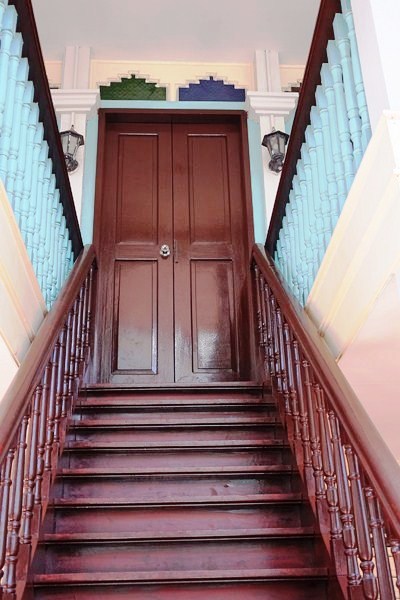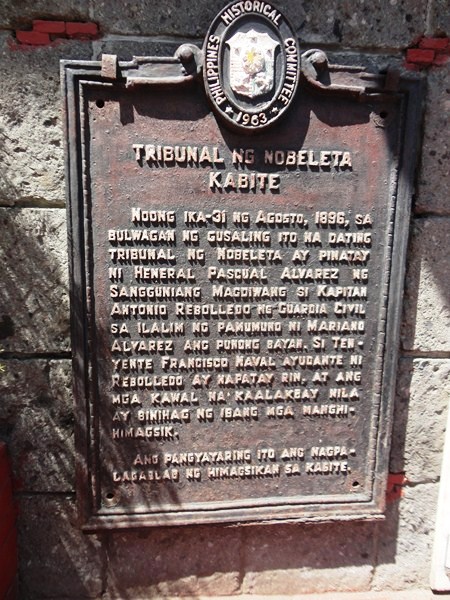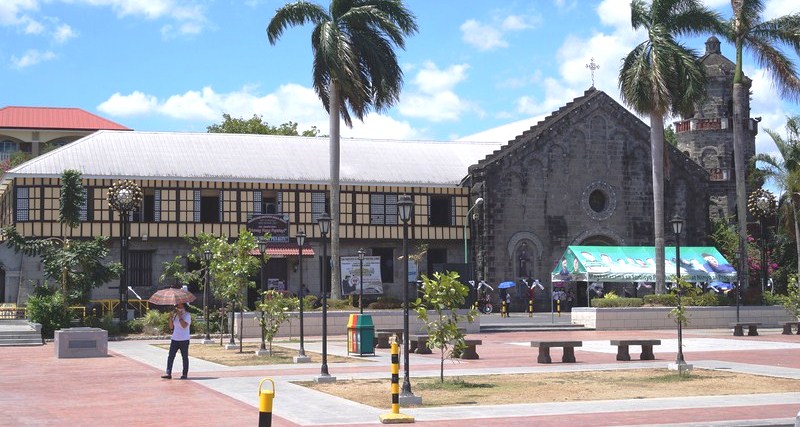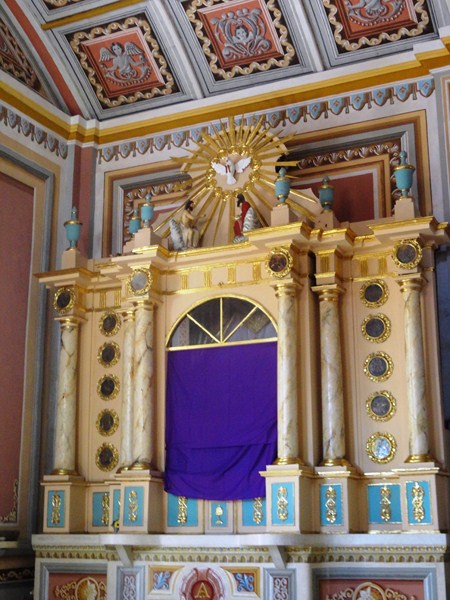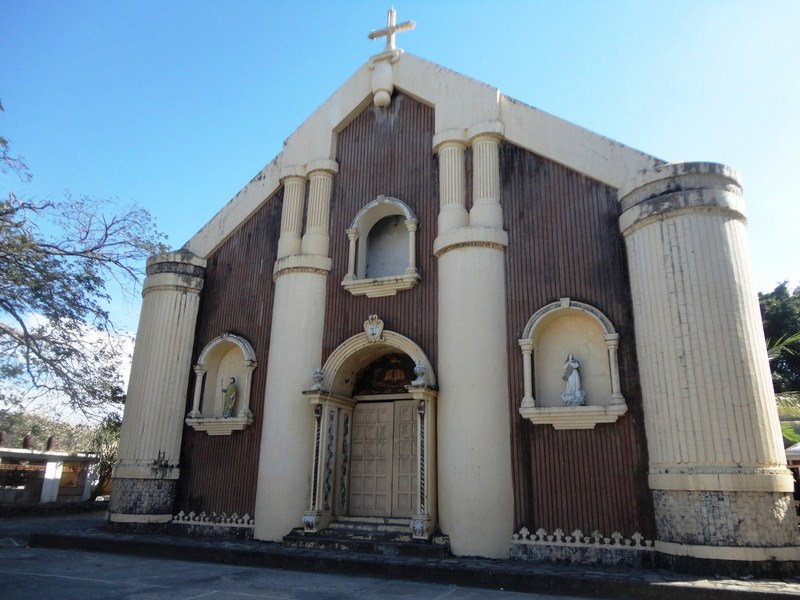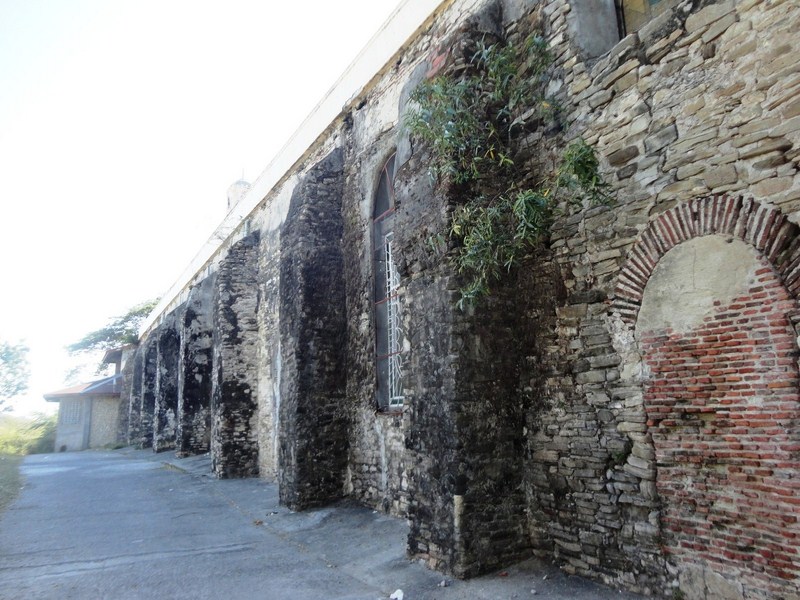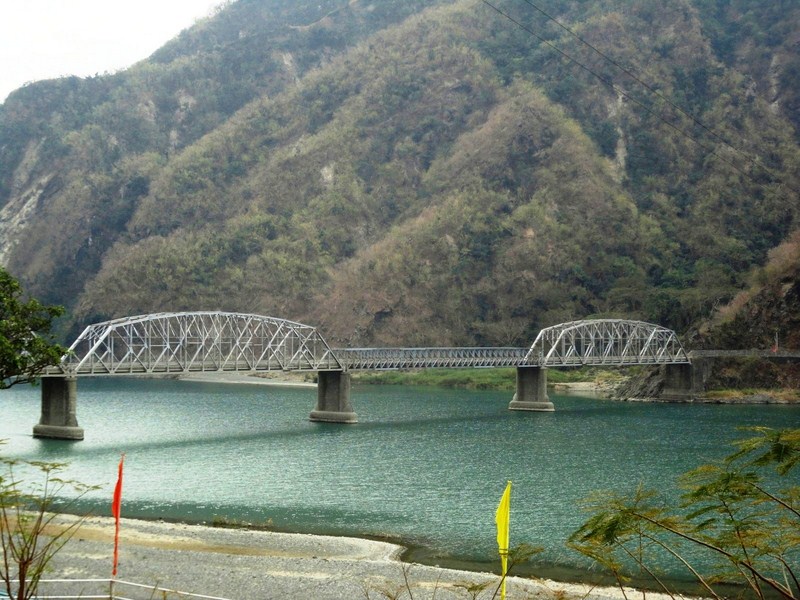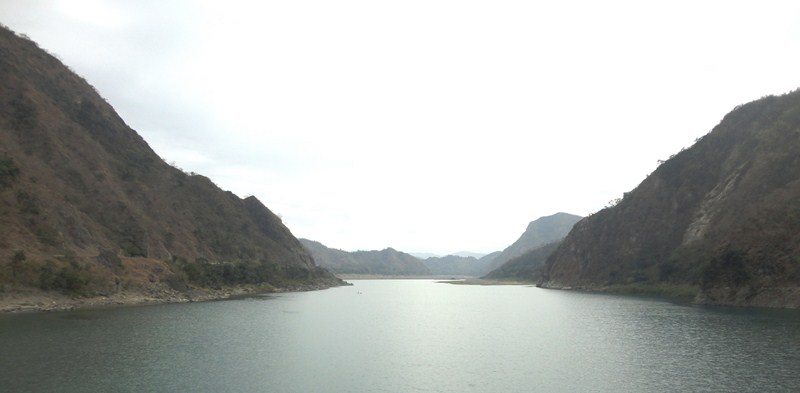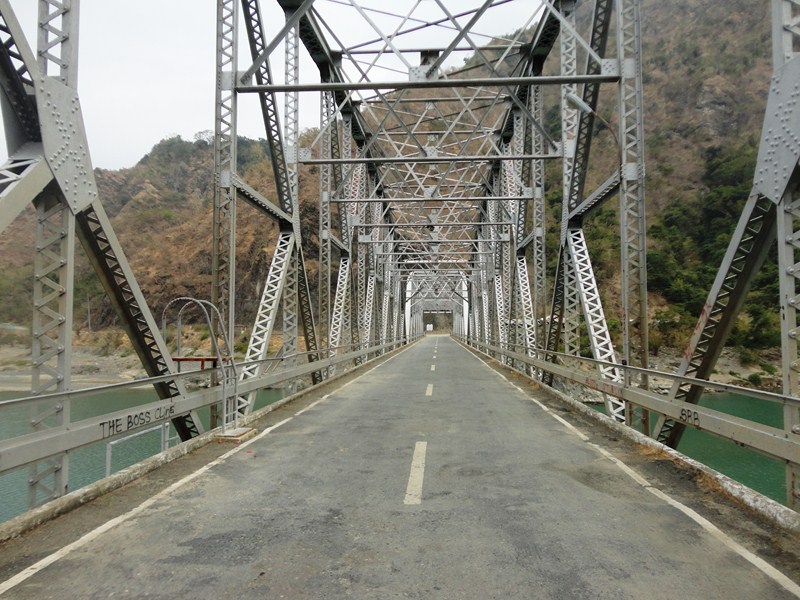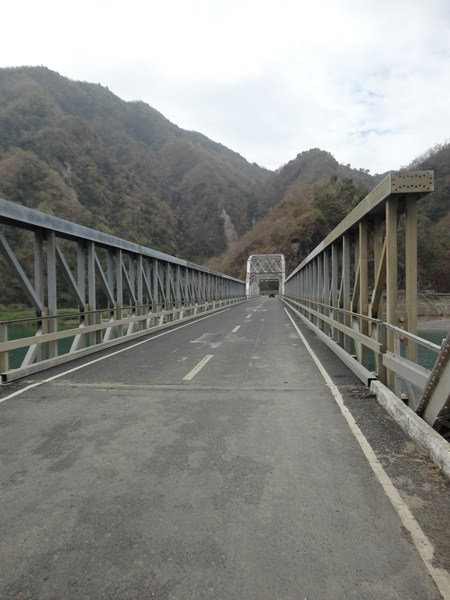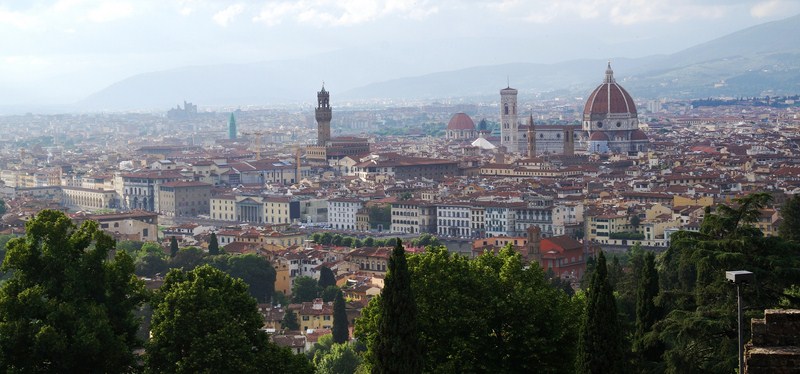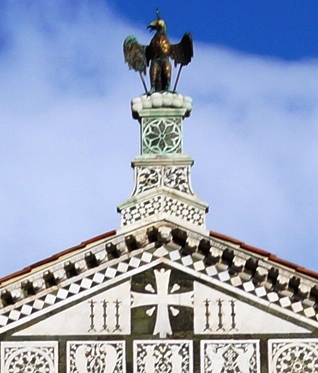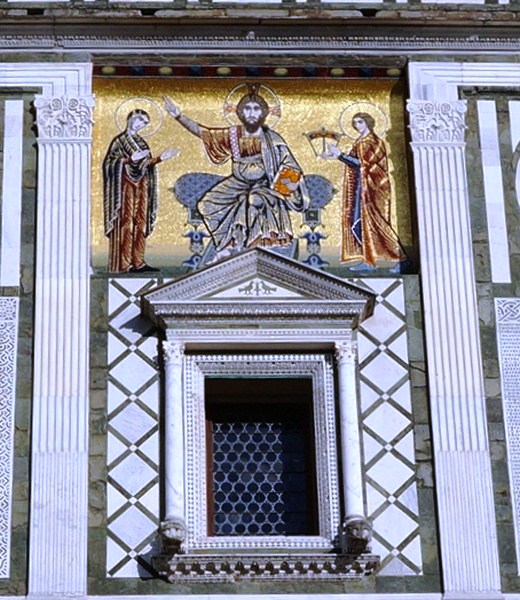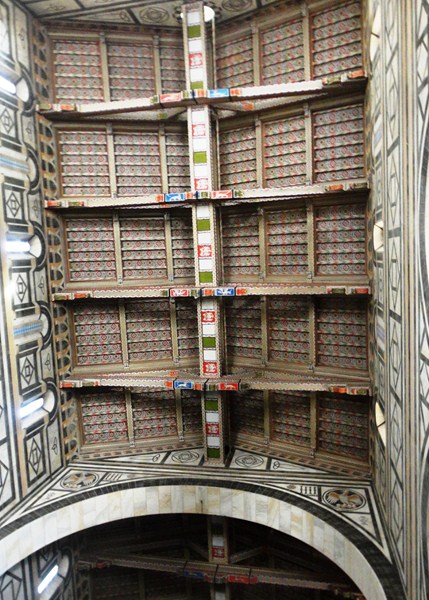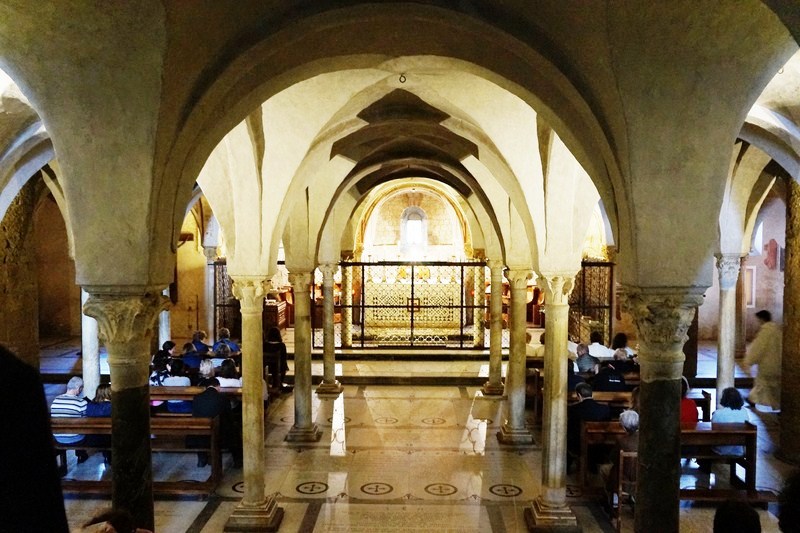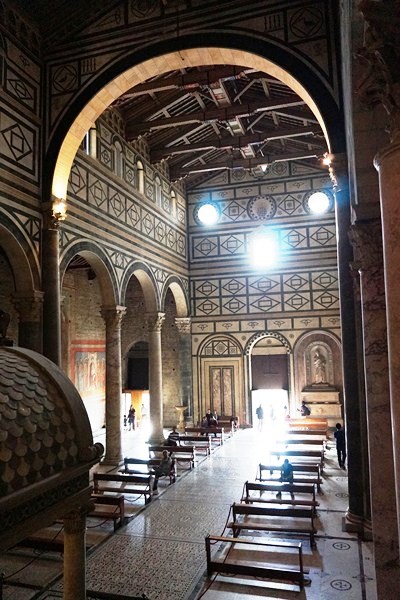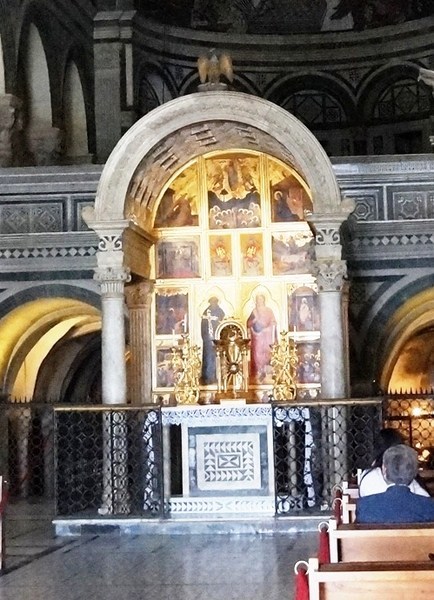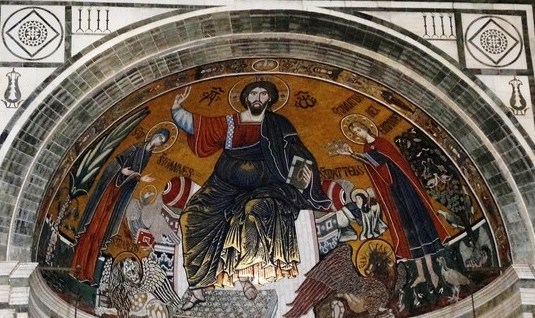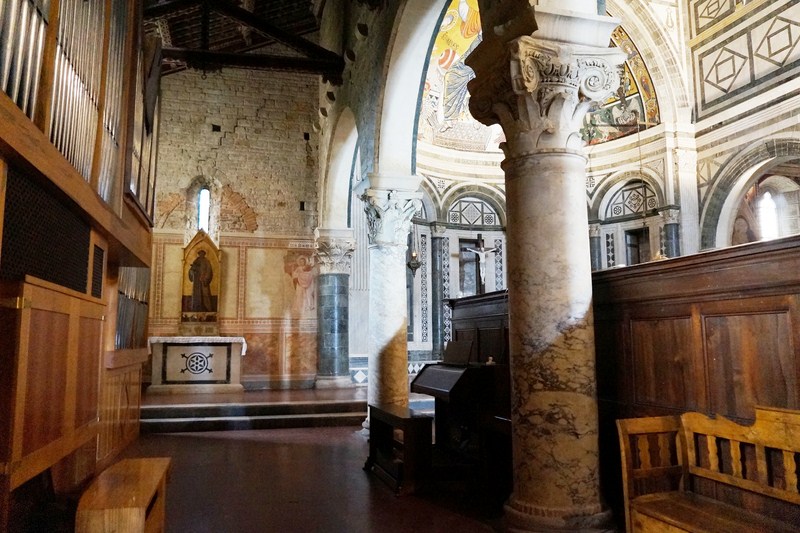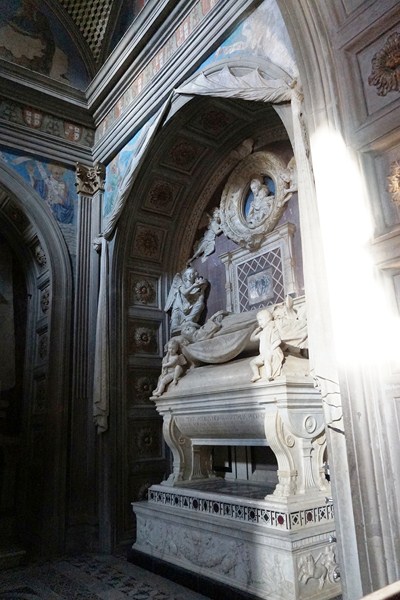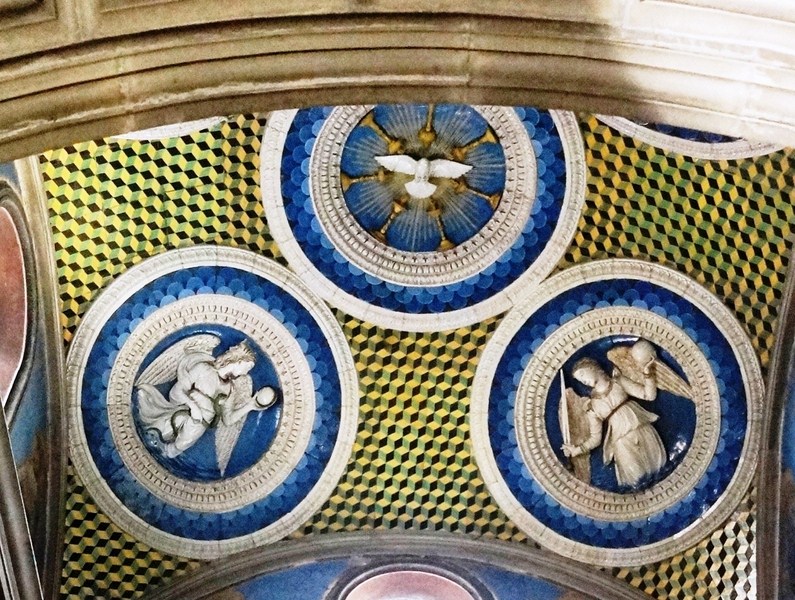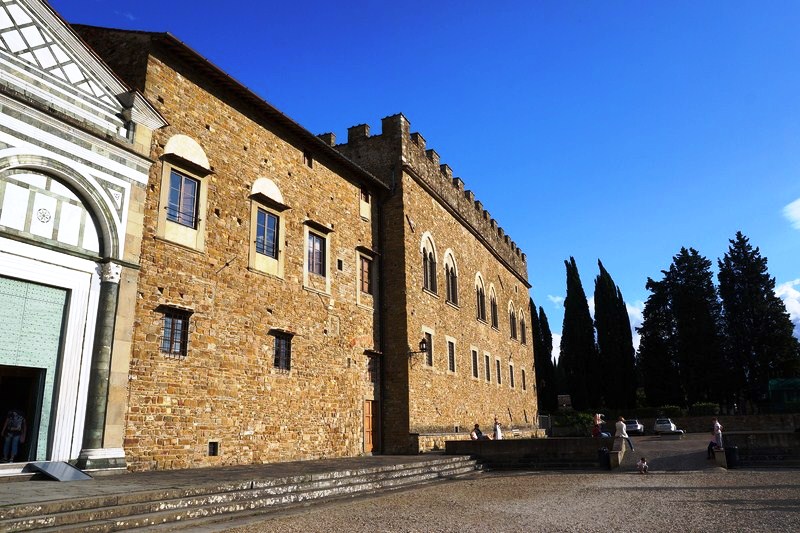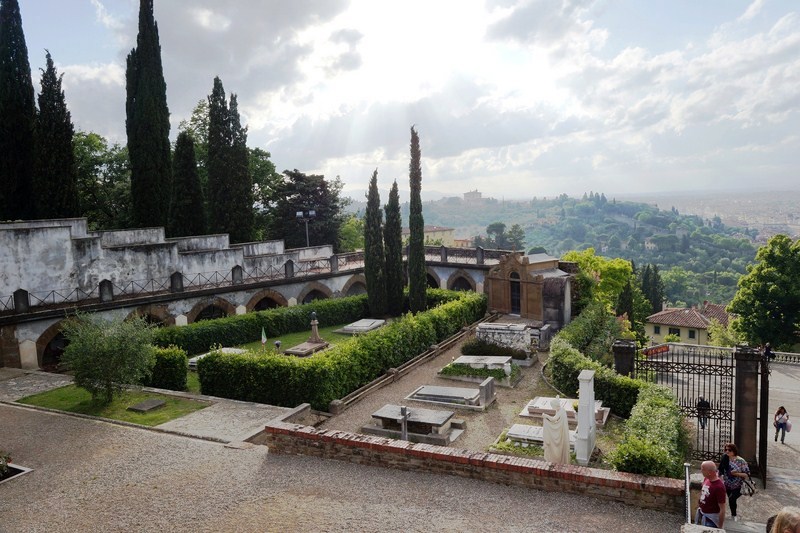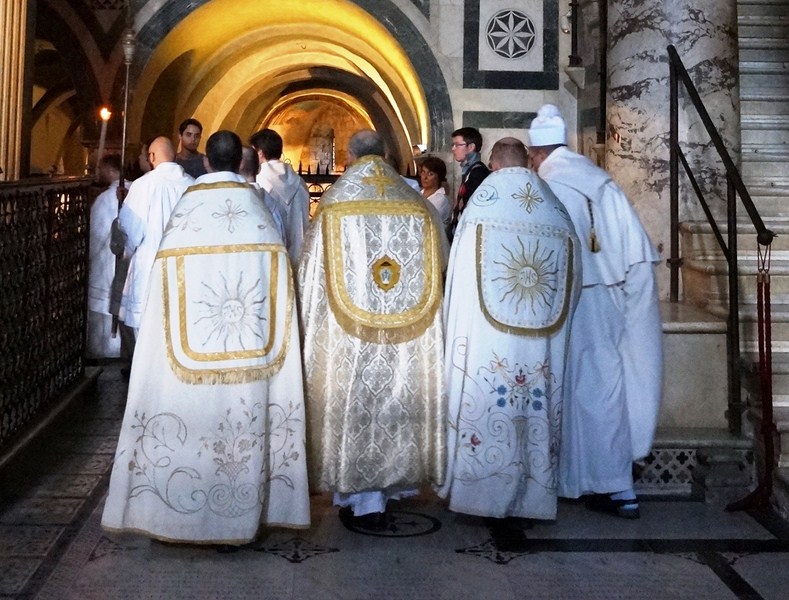From the Church of St. Francis of Assisi in Gen. Trias City, we drove the short 3.6 km. (10-min.) drive, via Gen. Trias Drive, to Tanza where we made a short stopover at the town’s Church of the Holy Cross (also called the Diocesan Shrine of St. Augustine). Started in 1839, it was destroyed 20 years later during a strong earthquake.
Check out “VIsita Iglesia 2017” and “Church of St. Francis of Assisi“
The church was rebuilt in 1873 by Fr. Jose Trobat. On May 3, 1980, it was declared as a Marked Structure (of Historical Significance) by the National Historical Commission of the Philippines.
AUTHOR’S NOTES:
Its 3-level Baroque façade has a semicircular arched main entrance with portico, above which is a square window, flanked by paired superpositioned flat pilasters and statued niches. The segmental pediment has a semicircular arched statued niche at the tympanum.
The 4-storey bell tower, sitting on a square base, has semicircular arched openings on the upper octagonal storeys. It is topped by a dome with a campanile on top.
Church of the Holy Cross: Tanza – Trece Martires Rd., Tanza 4108, Cavite. Tel: (046) 437-7086. Feast of St. Augustine: August 28
How to Get There: Tanza is located 33 kms. from Manila, 12.7 kms. from Trece Martires City, 3.7 kms. from Rosario, 12.8 kilometers from Naic and 6 kms. from Noveleta.

